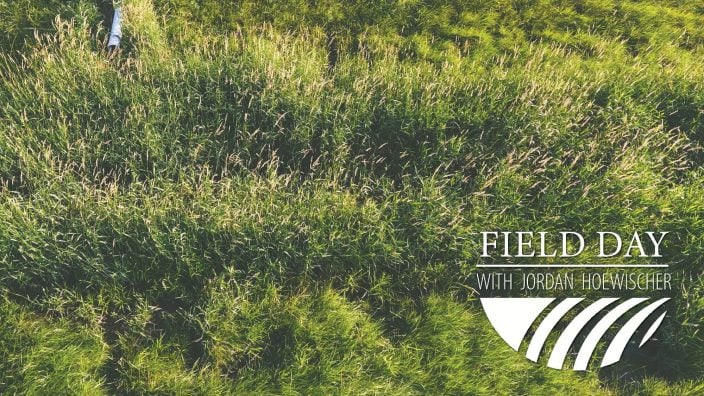Applications for Ohio Farm Bureau Health Plans now available
Members have three ways to apply: contacting a certified agent, calling 833-468-4280 or visiting ohiofarmbureauhealthplans.org.
Read MoreOhio Farm Bureau’s Director of Water Quality and Research Jordan Hoewischer talks with Chris Winslow, director of both Ohio State University’s Stone Laboratory and the Ohio Sea Grant College program, both specializing in research, education and outreach regarding the health of Lake Erie and how it relates to agriculture and the community as a whole.
“We need win-wins,” Winslow says. “We need a healthy lake, but we need a healthy and robust ag industry in Ohio.”
This is the second installment of Field Day with Jordan Hoewischer, an ongoing series of conversations with industry experts and leaders who are helping to shape and secure the future of Ohio’s ag industry for generations to come.
Following are some highlights from Episode 2. Listen to the entire episode here.
Q: What are the goals of the Ohio Sea Grant College program and OSU’s Stone Laboratory?
A: Ohio Sea Grant is a federally funded program modeled off of the land grant programs that exist in the United States. We report to NOAA (National Oceanic and Atmospheric Administration). Because Ohio borders Lake Erie, we have an Ohio Sea Grant program. It’s one of 33 sea grant programs across the country. Our goal is to conduct research on issues present in Lake Erie and get those findings into the hands of stakeholders, academics, decision-makers, etc. Both the Sea Grant program and the mission of OSU’s Stone Lab, as directed by the university, is research, education and outreach as it relates to Lake Erie.
Q: What would you say is the current status of Lake Erie?
A: As far as harmful algal blooms, I would argue that we’re making progress. We’re at a place where people are aware and understanding the complexities of the issue. In terms of nutrient loading and harmful algal blooms we’re maintaining the status quo. If you look across the Great Lakes I would say that Lake Erie is at a moderate health level…across the board it’s probably at a consistent level of impact.
Q: What can farmers and agriculturalists do to bridge the communication gap to the general community?
A: There are fantastic farmers who come to town hall-style meetings and open forums who understand the concerns of other business owners, charter captains, marine owners and tourist destinations and are saying “we as a farming community are trying to be part of the solution.” Farmers are actively engaged. Let people know you are trying to be part of the solution.
Q: Are we making progress on the goals set forth for nutrient load reductions for Lake Erie?
A: Depends on the focus area your looking at. Are we making progress in water treatment solutions and understanding the effects to human health, yes. We are more focused and on target with education and getting the message out. As far as showing a measurable change in the watershed, there are just so many acres in the watershed I don’t know if we’ve moved that dial far enough yet. I think we’re still in that period where blooms are primarily dictated on the spring rainfall. As best management practices on the agricultural landscape ramp up, I think you’ll see a separation between is the bloom driven by rain or is it driven by actual work that’s on the ground.


Members have three ways to apply: contacting a certified agent, calling 833-468-4280 or visiting ohiofarmbureauhealthplans.org.
Read More

Bill Patterson, Cy Prettyman and Adele Flynn will continue to serve as officers for Ohio Farm Bureau Federation.
Read More

Delegates discussed many topics impacting agriculture including farmland preservation, local foods, and succession planning.
Read More

Twenty-six farmers govern the state’s largest farm and food organization.
Read More

The 2025 recipients are Fred Cooke (posthumous) of Richland County, Marvin Dietsch of Williams County, Steven Knollman of Hamilton County and Michele Miller (posthumous) of Ottawa County.
Read More

Nathan and Jill Parriman grow seasonal crops, including Christmas trees, pumpkins and cut flowers, providing U-cut experiences that invite customers to engage directly with agriculture.
Read More

The 2025 Distinguished Service Award recipients are Craig Adams, Mike Townsley, and Kellogg Farms, Kurt Farms and Stateler Family Farms.
Read More

Ohio Farm Bureau Treasurer Adele Flynn participated in the meeting, representing Ohio farmers.
Read More

For Ohio and PJM region, the outlook is reassuring—ample reserves and strong planning should keep the power on.
Read More

The average price for a classic holiday feast for 10 in Ohio will cost $55.87.
Read More